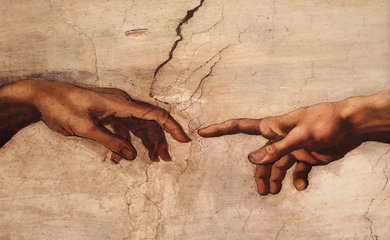Can you deflect criticism for plagiarism and ill-thought out Twitter escapades by announcing that your actions were really “performance art” all along? Actor Shia LaBeouf recently pulled, or attempted to pull, a Joaquin Phoenix meta-piece of commentary on authorship and art after he plagiarized the work of legendary cartoonist Daniel Clowes for his own short film HowardCantour.com. After he was called out on stealing Clowes’ work for his own purposes, LaBeouf posted a seemingly heartfelt series of apology Tweets–which also turned out to have been plagiarized from Yahoo Answers.
LaBeouf’s odd behavior did not stop there; he hired a skywriter to write “I AM SORRY DANIEL CLOWES” above the Los Angeles skyline (caveat: Clowes lives in Northern California and was unable to see this very public “apology”), then posted some more apologetic Tweets for his earlier plagiarism–said Tweets were, perhaps unsurprisingly, also plagiarized from other famous people. During another Twitter spree, during which he proclaimed his “retirement from public life,” Clowes’ legal team responded with a cease-and-desist letter–this time due to LaBeouf’s passing off another set of Clowes’ ideas (specifically, the cartoonist’s 2000 graphic novella David Boring) as his own original creation; true to form, LaBeouf apparently failed to take the C&D seriously at all.
This week, LaBeouf attempted to explain away his bizarre behavior, outright plagiarism, and real-life demonstration of the idiom that “no publicity is bad publicity” by telling any news outlet that will listen that it has all been part of a “meta-modernist piece” of performance art. In two (now-deleted) image posts on his Twitter account, LaBeouf said, in part:
Performance art has been a way of appealing directly to a large public, as well as shocking audiences into reassessing their own notions of art and its relation to culture[. . .]All art is either plagarisum [sic] or revolution & to be revolutionary in art today, is to be reactionary. In the midst of being embroiled in acts of intended plagiarism, the world caught me & I reacted. The show began. I became completely absorbed, oblivious to things around me.
In his zeal to get the public to pay attention to him, LaBeouf has made the mistake of confusing artistic intentions with an underwhelming (not to mention obnoxious) result. It appears that he has taken the maxim that “good artists copy, great artists steal” to its logical extreme–only without adding anything interesting or of note to the work he has blatantly stolen, instead preferring to recycle almost every cliche about “art” that self-proclaimed artists often spout when they have not actually produced anything of value. It’s one thing to talk about the art that you make; it’s another thing to actually make art. From his defensive posturing to plagiarizing without once offering any sign that he is truly sorry about doing so, it’s clear that LaBeouf is not willing to put in the time or energy to make actual art. What this “meta commentary” of his shows is that he wants all of the press attention for being an “artist” without actually having to do anything that making art requires.
Infringing on copyright by stealing the work of other creatives is not revolutionary, despite what LaBeouf may think; particularly with his self-righteous finger-wag at social media site Tumblr, he misses the distinction between stealing art and sharing it. Had LaBeouf, for example, made an homage to the influential work of Daniel Clowes in HowardCantour.com instead of copying text and dialogue from Clowes’ work and then passing it off as his own art, his bizarre “meta commentary” could have gone in a very different direction. As it stands, however, his sneering #stopcreating hashtag has an unsettling message–namely, that he did not create anything with this piece of performance art. He merely stole the work of others, and expected that he could get away with it by calling it art.
Photo by EuroMagic, licensed under a Creative Commons Attribution 2.0 Generic license.

